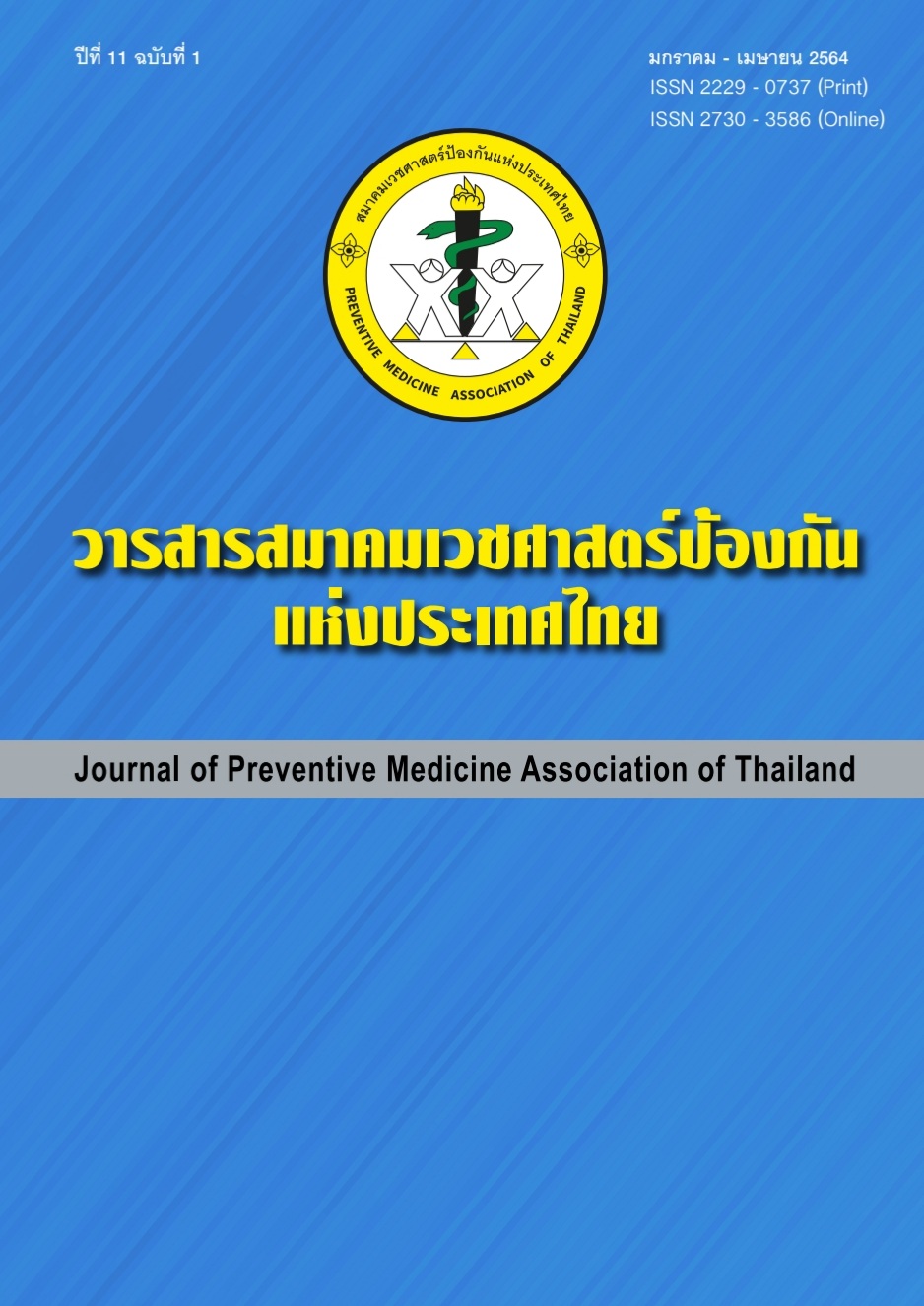Infection in Hospitalized Trauma Patients: Prevalence, Risk Factors in Phra Nakhon Si Ayutthaya hospital
Keywords:
trauma patient, nosocomial infectionAbstract
Several factors place victims of multiple traumas at increased risk for infection. The purpose of this study was to delineate the frequency and risk factors for infection in hospitalized trauma patients. Retrospective surveillance for nosocomial infection was conducted for all trauma patients who were admitted for more than 24 hours in a tertiary care regional trauma center between April 1 and June 30, 2020. A total of 364 patients (300 males) with a mean age of 31 years (range 2-87 years) were reviewed. Most 28.8% sustained close fracture injuries. A total of patients occurred infections was 44 patients (12.1%). Of the hospitalized patients, 69.23% were infected with only one system, 29.23% were dual-infected, and 1.53% was infected with three or more systems. The most common site of infection was lower respiratory tract (60%) followed by surgical site (18.46%) and urinary tract (12.31%). In a multivariate analysis, the risk factors of infection were open fracture (95% CI = 1.69-2.67, p=0.04), extremity injury (95% CI = 1.35-5.35, p < 0.001), ICU admission (95% CI = 1.23-1.57, p < 0.001), ventilated patients (95% CI = 1.83-4.51, p < 0.001), multiple surgical procedures (95% CI = 1.59-4.89, p < 0.001), and received multiple blood transfusions (95% CI = 1.94-1.98, p < 0.001). The first surgical procedure within 24 hours of admission was protective. (95% CI = 0.50-0.67)
In conclusion, trauma patients are at high risk for developing an infection. Identifying patients at increased risk for infection may allow for early intervention and subsequent decrease in infectious morbidity.
References
2. Cole E, Davenport R, Willett K, Brohi K. The burden of infection in severely injured trauma patients and the relationship with admission shock severity. J Trauma Acute Care Surg 2014;76:730-5.
3. Morrison JJ, Yapp LZ, Beattie A, Devlin E, Samarage M, McCaffer C, et al. The epidemiology of Scottish trauma: A comparison of pre-hospital and in-hospital deaths, 2000 to 2011. Surgeon 2016;14:1-6.
4. MacKenzie EJ, Rivara FP, Jurkovich GJ, Nathens AB, Prey KP, Egleston BL, et al. The national study on costs and outcomes of trauma. J Trauma 2007;63(6 Suppl):S54-67.
5. Garner JS, Jarvis WR, Emori TG, Horan TC, Hughes JM. CDC definitions for nosocomial infections, 1988. Am J Infect Control 1988;16:128-40.
6. Berríos-Torres SI, Umscheid CA, Bratzler DW, Leas B, Stone EC, Kelz RR, et al. Centers for disease control and prevention guideline for the prevention of surgical site infection, 2017. JAMA Surg 2017;152:784–91.
7. Allegranzi B, Zayed B, Bischoff P, Kubilay NZ, de Jonge S, de Vries F, et al. New WHO recommendations on intraoperative and postoperative measures for surgical site infection prevention: an evidence-based global perspective. Lancet Infect Dis 2016;16:e288–303.
8. Peery AF, Crockett SD, Barritt AS, Dellon ES, Eluri S, Gangarosa LM, et al. Burden of gastrointestinal, liver, and pancreatic diseases in the United States. Gastroenterology 2015;149:1731-41.
9. Levin SN, Lyons JL. Infections of the Nervous System. Am J Med 2018;131:25-32.
10. Prin M, Li G. Complications and in-hospital mortality in trauma patients treated in intensive care units in the United States, 2013. Inj Epidemiol 2016;3:18.
11. Hill GE, Frawley WH, Griffith KE, Forestner JE, Minei JP. Allogenic blood transfusion increases the risk of postoperative bacterial infection: A meta-analysis. J Trauma 2003; 54:908-14.
Downloads
Published
How to Cite
Issue
Section
License
บทความที่ลงพิมพ์ในวารสารเวชศาสตร์ป้องกันแห่งประเทศไทย ถือเป็นผลงานวิชาการ งานวิจัย วิเคราะห์ วิจารณ์ เป็นความเห็นส่วนตัวของผู้นิพนธ์ กองบรรณาธิการไม่จำเป็นต้องเห็นด้วยเสมอไปและผู้นิพนธ์จะต้องรับผิดชอบต่อบทความของตนเอง





